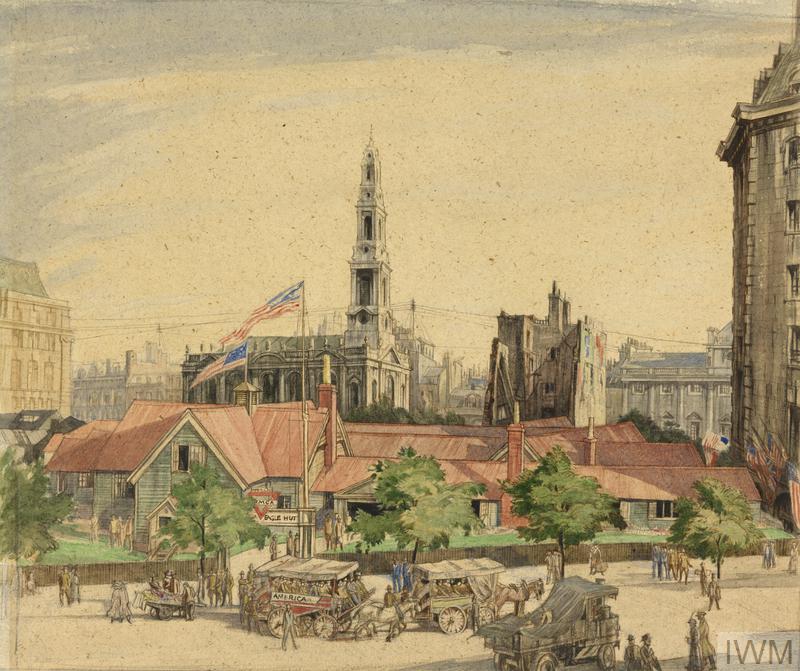The Eagle Hut and King’s College London
Posted in Strandlines and tagged with

World War One undoubtedly had an impact on the Strand area. When the United States of America entered the European conflict in 1917, the American Y.M.C.A. found space along the Strand for the Eagle Hut – a rest and recreation centre for their troops in the Aldwych which began services in August 1917 – in a cleared off space opposite Somerset House near St Mary-le-Strand and King’s College. The space had covered a poor area which had been cleared away – not by war, but in a programme of urban renewal.

The Eagle Hut, Aldwych (Art.IWM ART 1123) image: a view across the wooden buildings of the American YMCA Eagle Hut in Aldwych, constructed adjacent to St Mary le Strand church, which is visible immediately behind. Two horse-drawn carts full of American soldiers are on the road in front of the huts, as well as a truck and various civilians. Trees line the pavement and the American huts are bordered by a neat wooden fence and lawn, with Ame… Copyright: © IWM. Original Source: http://www.iwm.org.uk/collections/item/object/23488
It appears that after the clearance, but before the middle part of the Aldwych could be populated with major buildings, World War One intervened. Photos and drawings show that the Y.M.C.A. was able to construct a sprawl of mainly single or two storey wooden buildings over 35,000 square feet of space. In addition to providing as many as 5000 meals per day and recreation, the Y.M.C.A. offered American doughboys dormitory space sufficient to accommodate 405 sleepers with 17 cubicles and 15 large dormitories.
After the Eagle hut closed in August 1919, the land was taken up by the American financier Irving T Bush. However, before construction began of what would be Bush House (for 70 years home of the BBC World Service from 1941), some of the Eastern part of the hut complex, known as the Aldwych Hut, was used temporarily by King’s College London and the London School of Economics to provide extra teaching space for a flood of post-war students including men from the services taking advantage of the Government Scheme for Higher Education. At King’s, student numbers increased from a pre-war 650 to about 1200.
This rental scheme lasted from 1919 until 1921 after which Bush House was constructed. By a neat turn of history, roughly a century after King’s leased the Aldwych hut to increase teaching space, the College again finds itself leasing space in Bush house in the same area along the Strand for the same reason.
Stephen Miller
King’s College London Archives
